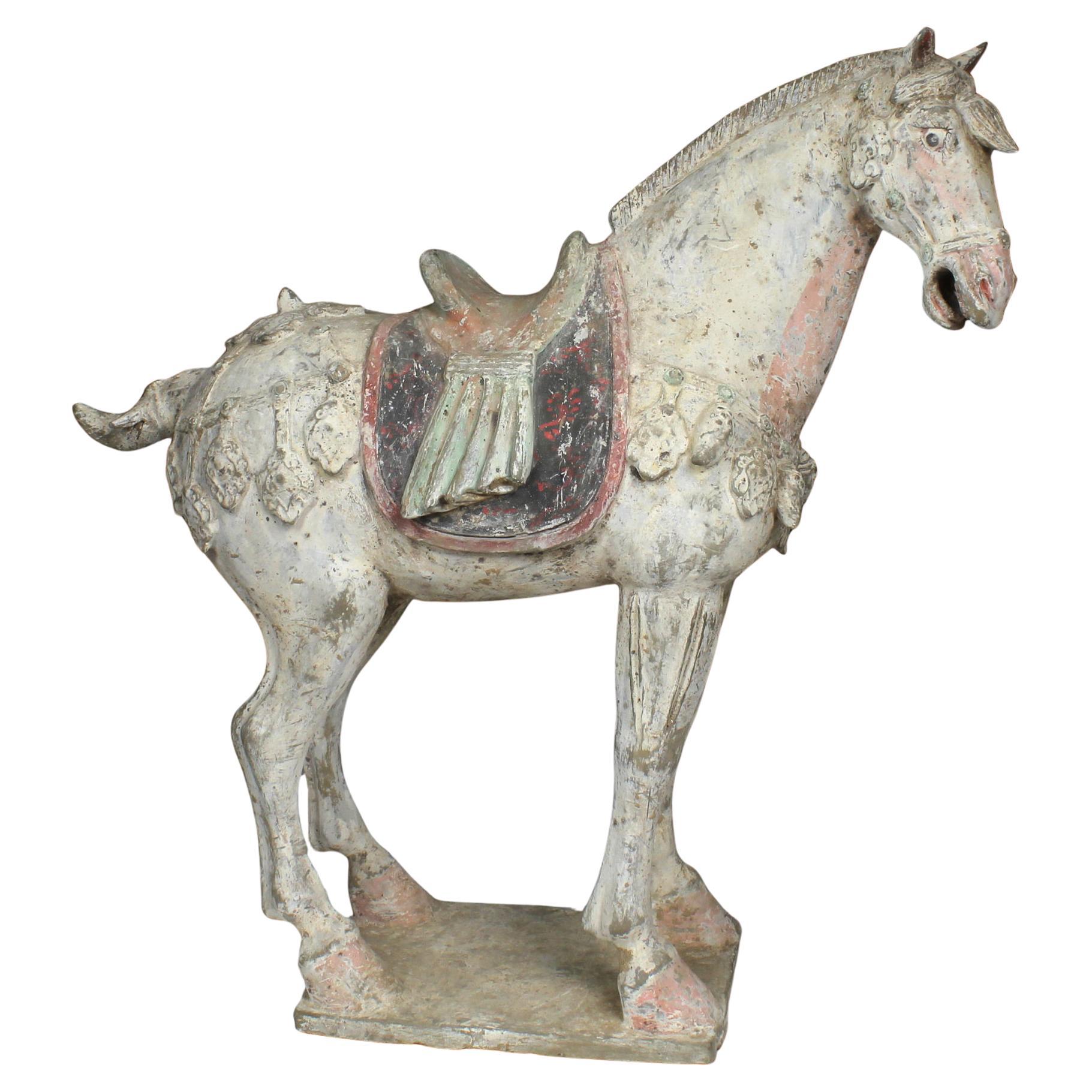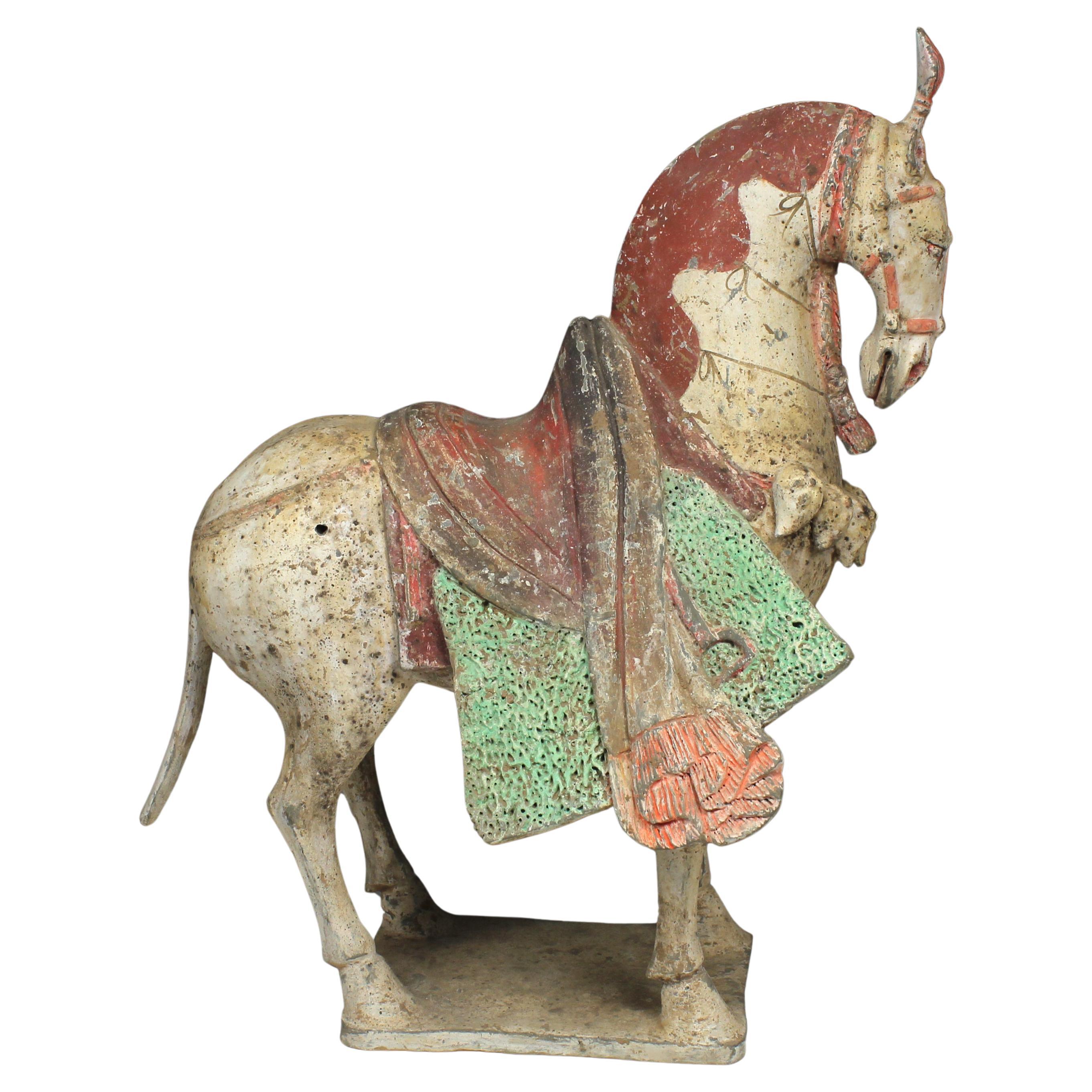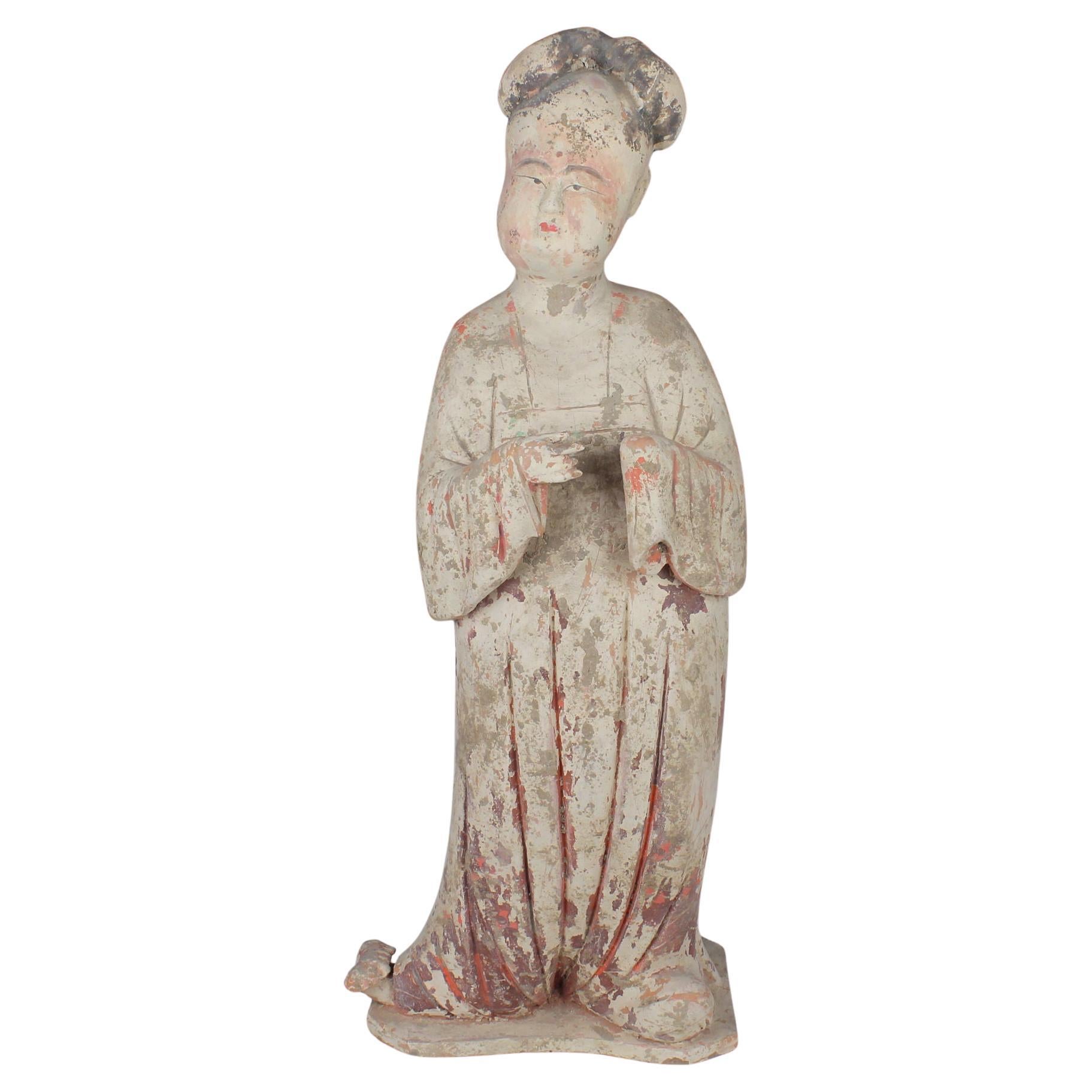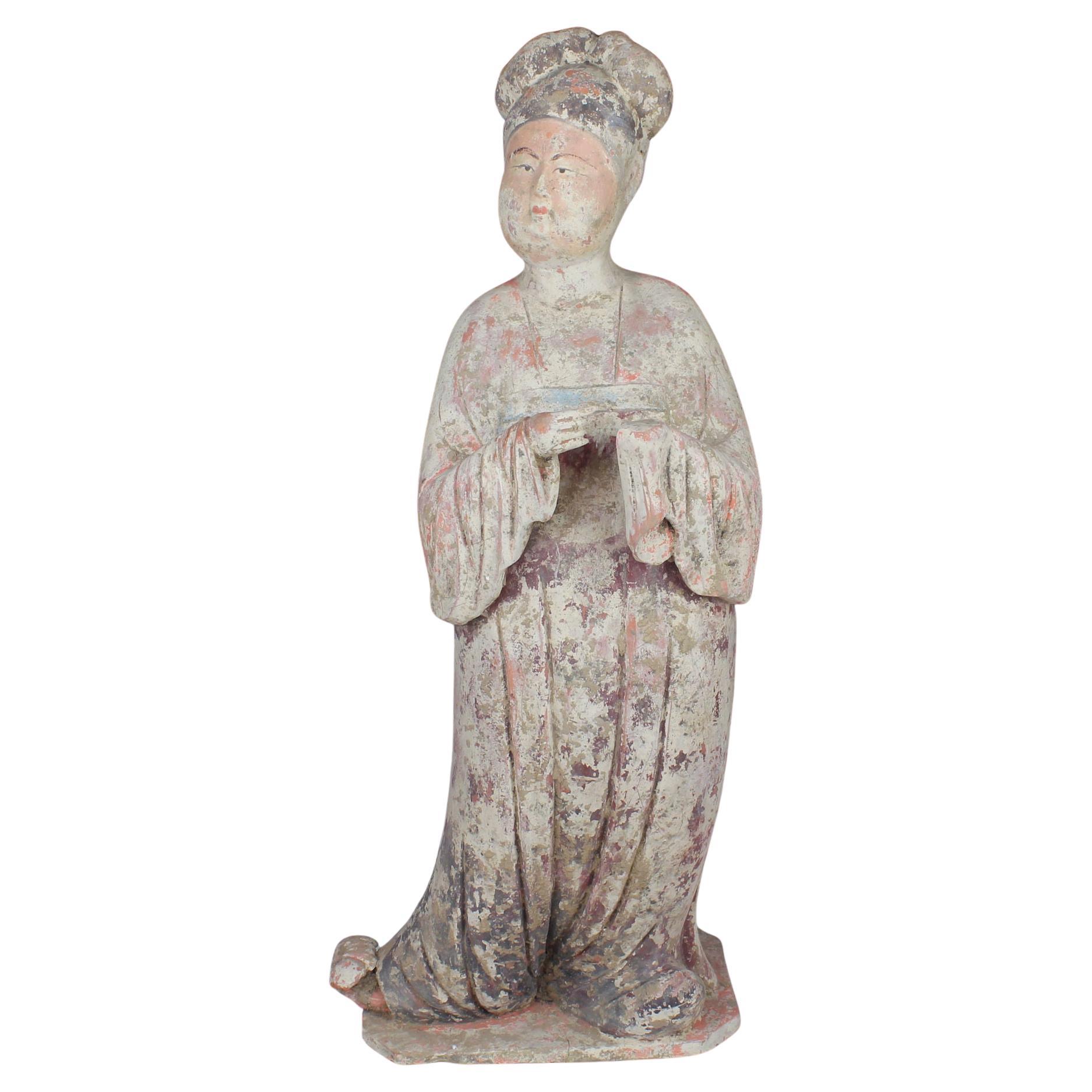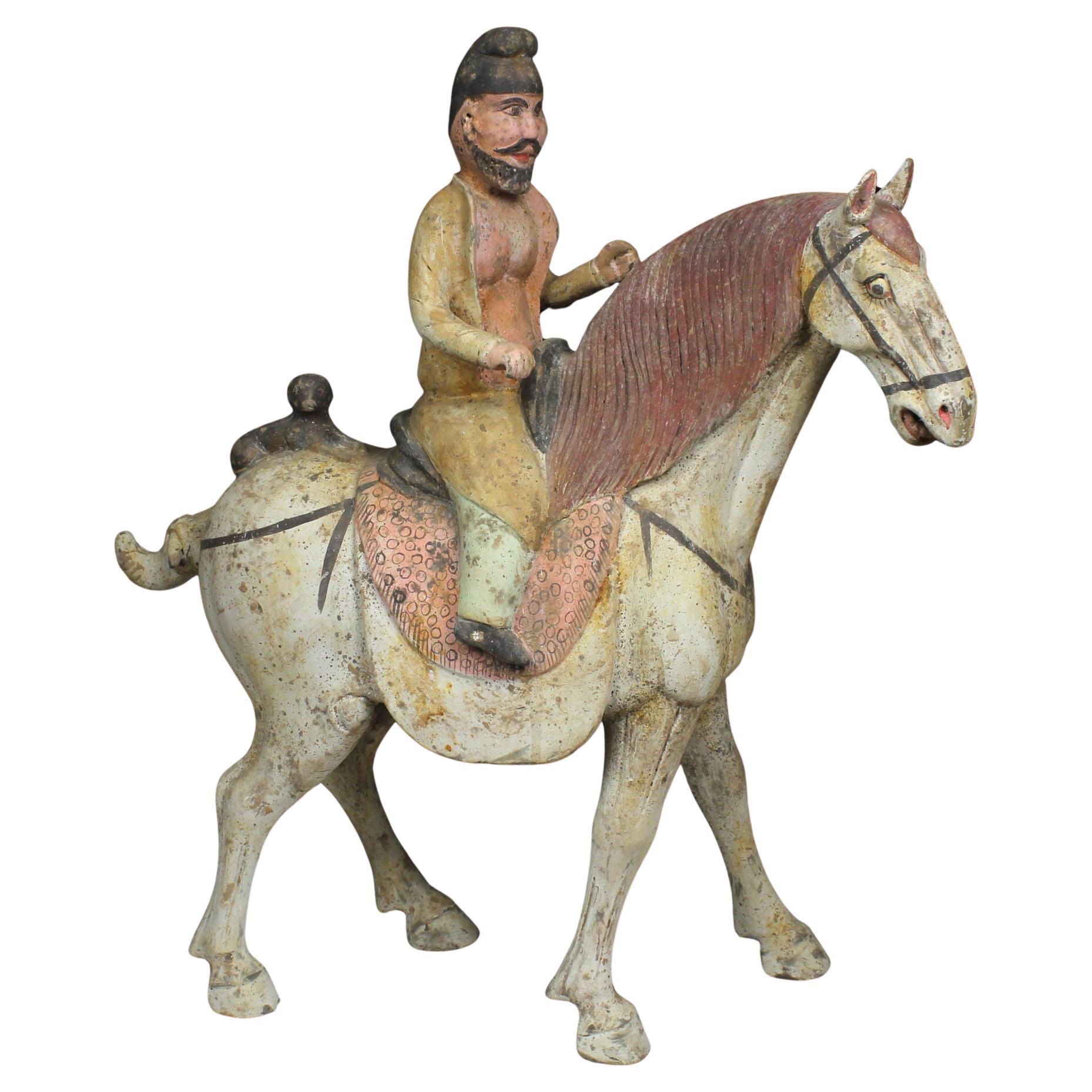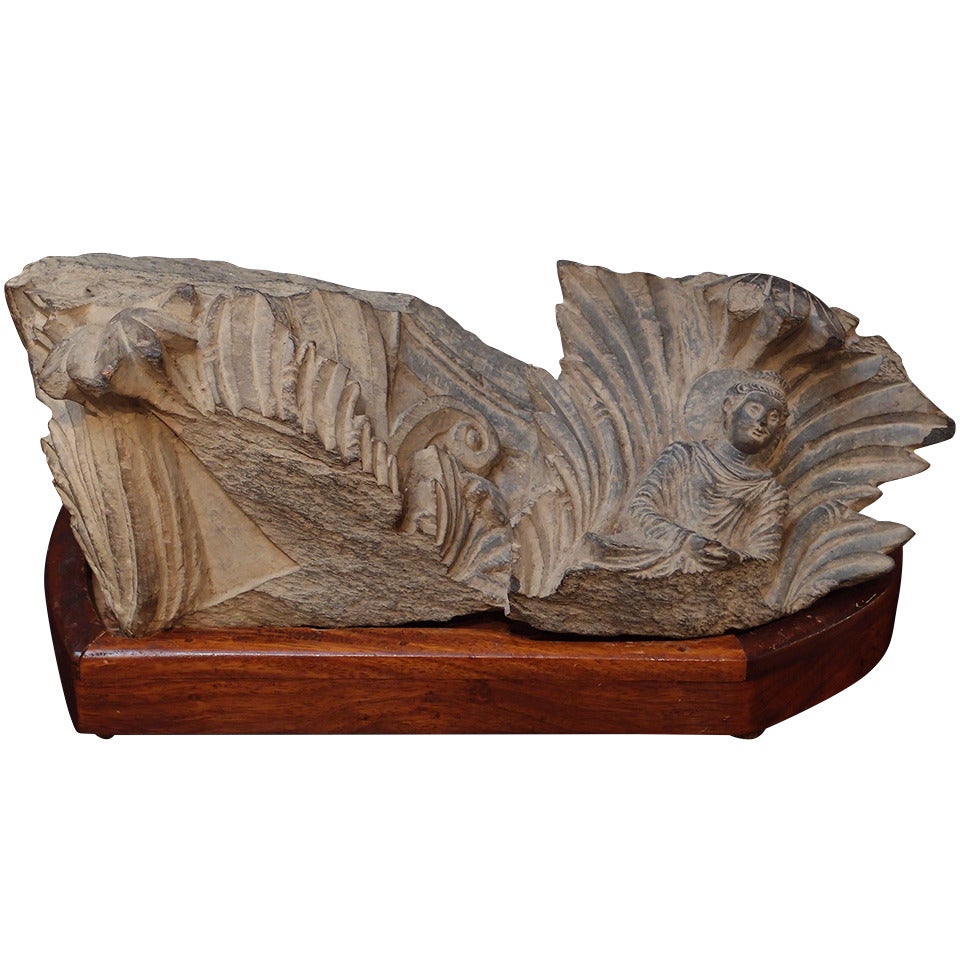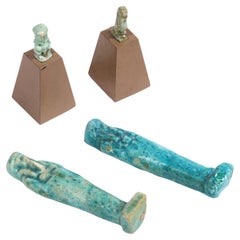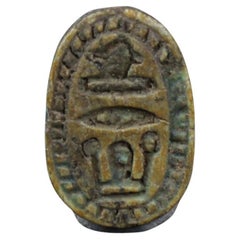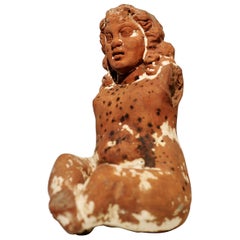
Egyptian Terracota Statuette of the Seated Harpocrates
View Similar Items
1 of 7
Egyptian Terracota Statuette of the Seated Harpocrates
About the Item
- Dimensions:Height: 5.2 in (13.2 cm)Width: 2.88 in (7.3 cm)Depth: 3.47 in (8.8 cm)
- Style:Egyptian (Of the Period)
- Materials and Techniques:Terracotta,Molded
- Place of Origin:
- Period:
- Date of Manufacture:1st-2nd Century AD
- Condition:Wear consistent with age and use. Both arms and feet are missing, otherwise intact. Surface rubbed in places and sintered. Traces of white engobe; scattered fungoid spots.
- Seller Location:Zurich, CH
- Reference Number:1stDibs: LU5021119340161
You May Also Like
- Roman statuette of Eros-HarpocratesLocated in EL CAMPELLO, ESITEM: Statuette of Eros-Harpocrates MATERIAL: Bronze CULTURE: Roman PERIOD: 1st Century B.C – 1st Century A.D DIMENSIONS: 82 mm x 31 mm CONDITION: Good condition PROVENANCE: Ex Ameri...Category
Antique 15th Century and Earlier Italian Classical Roman Antiquities
MaterialsBronze
- Set of Four Egyptian Antiquities, Pair of Sarcophagus Faience & Two FigurinesLocated in New York, NYThis captivating authentic Egyptian Faience set was realized in ancient Egypt circa 3100 BCE. It offers two sarcophagus figurines- suggestive of miniature versions of King Tut's tomb- hand finished in a beautiful turquoise hue (a glaze created by pulverizing the stone into pigment). Additionally, the set features two figurines (one representative of the Egyptian god Anubis), and the other seemingly a depiction of one of the ruler's as a young child also in a turquoise glaze atop volumetric rhombus plinths with tapered sides in a refined terra cotta hue. Full of historical importance (and stunning as stand alone objects) this collection of Egyptian antiquities...Category
Antique 15th Century and Earlier Egyptian Egyptian Figurative Sculptures
MaterialsFaience
- Egyptian scarabLocated in EL CAMPELLO, ESITEM: Scarab MATERIAL: Glazed steatite CULTURE: Egyptian PERIOD: Second Intermediate Period, 1700 – 1550 B.C DIMENSIONS: 14 mm x 8 mm CONDITION: Good condition PROVENANCE: Ex America...Category
Antique 15th Century and Earlier Egyptian Egyptian Antiquities
MaterialsStone
Sold$379 - Chinese statuette of a horseLocated in EL CAMPELLO, ESITEM: Statuette of a horse MATERIAL: Pottery CULTURE: Chinese, Tang Dynasty PERIOD: 618 – 907 A.D DIMENSIONS: 560 mm x 530 mm x 200 mm CONDITION: Good condition. Includes Thermolumin...Category
Antique 15th Century and Earlier Chinese Tang Antiquities
MaterialsPottery
- Chinese statuette of a horseLocated in EL CAMPELLO, ESITEM: Statuette of a horse MATERIAL: Pottery CULTURE: Chinese, Northern Wei Dynasty PERIOD: 386 – 535 A.D DIMENSIONS: 404 mm x 350 mm x 230 mm CONDITION: Good condition. Includes Th...Category
Antique 15th Century and Earlier Chinese Tang Antiquities
MaterialsPottery
- Chinese statuette of a Fat LadyLocated in EL CAMPELLO, ESITEM: Statuette of a Fat Lady MATERIAL: Pottery CULTURE: Chinese, Tang Dynasty PERIOD: 618 – 907 A.D DIMENSIONS: 645 mm x 260 mm x 180 mm CONDITION: Good condition. Includes Thermoluminescence test by Laboratory Kotalla (Reference 04B101123). Includes Certificate of Authenticity from Dutch gallery PROVENANCE: Ex Belgian private collection, acquired from Dutch art gallery Comes with Certificate of Authenticity and Export Licence. If you are from outside the European Union, we will have to apply for the export licence again for your country, this takes 4 to 6 weeks. Due to the fragility and size of this piece, it can only be shipped within the European Union, United Kingdom and neighbouring countries that can be transported by road by private courier (door to door). This beautifully-finished ceramic attendant was made during what many consider to be China’s Golden Age, the Tang Dynasty. It was at this point that China’s outstanding technological and aesthetic achievements opened to external influences, resulting in the introduction of numerous new forms of self-expression, coupled with internal innovation and considerable social freedom. The Tang dynasty also saw the birth of the printed novel, significant musical and theatrical heritage and many of China’s best- known painters and artists. The Tang Dynasty was created on the 18th of June, 618 AD, when the Li family seized power from the last crumbling remnants of the preceding Sui Dynasty. This political and regal regime was long-lived, and lasted for almost 300 years. The imperial aspirations of the preceding periods and early Tang leaders led to unprecedented wealth, resulting in considerable socioeconomic stability, the development of trade networks and vast urbanisation for China’s exploding population (estimated at around 50 million people in the 8th century AD). The Tang rulers took cues from earlier periods, maintaining many of their administrative structures and systems intact. Even when dynastic and governmental institutions withdrew from management of the empire towards the end of the period – their authority undermined by localised rebellions and regional governors known as jiedushi –the systems were so well- established that they continued to operate regardless. The artworks created during this era are among China’s greatest cultural achievements. It was the greatest age for Chinese poetry and painting, and sculpture also developed (although there was a notable decline in Buddhist sculptures following repression of the faith by pro-Taoism administrations later in the regime). It is disarming to note that the eventual decline of imperial power, followed by the official end of the dynasty on the 4th of June 907, hardly affected the great artistic turnover. During the Tang Dynasty, restrictions were placed on the number of objects that could be included in tombs, an amount determined by an individual’s social rank. In spite of the limitations, a striking variety of tomb furnishings – known as mingqi – have been excavated. Entire retinues of ceramic figures – representing warriors, animals, entertainers, musicians, guardians and every other necessary category of assistant – were buried with the dead in order to provide for the afterlife. Warriors (lokapala) were put in place to defend the dead, while horses/ camels were provided for transport, and officials to run his estate in the hereafter. Of all the various types of mingqi, however, there are none more elegant or charming than the sculptures of sophisticated female courtiers, known – rather unfairly – as “fat ladies...Category
Antique 15th Century and Earlier Chinese Tang Antiquities
MaterialsPottery
Recently Viewed
View AllMore Ways To Browse
Chubby Collection
African Statuettes
Terracota Head
Antique Wicker Baby Carriages
2 Wheel Buggy
Ancient Hitching Post
Fudo Myo
Antique Jade Belt
Sterling Censer
Hindu Incense Burner
Hermes Phallus
Pegu Bronze
Bamboo Food Carrier
Chinese Dragon Lantern Stand
Han Dynasty Pottery Kneeling Figure
Sumba Comb
Gandhara Stucco
Blue Chinese Ceramic Horse



